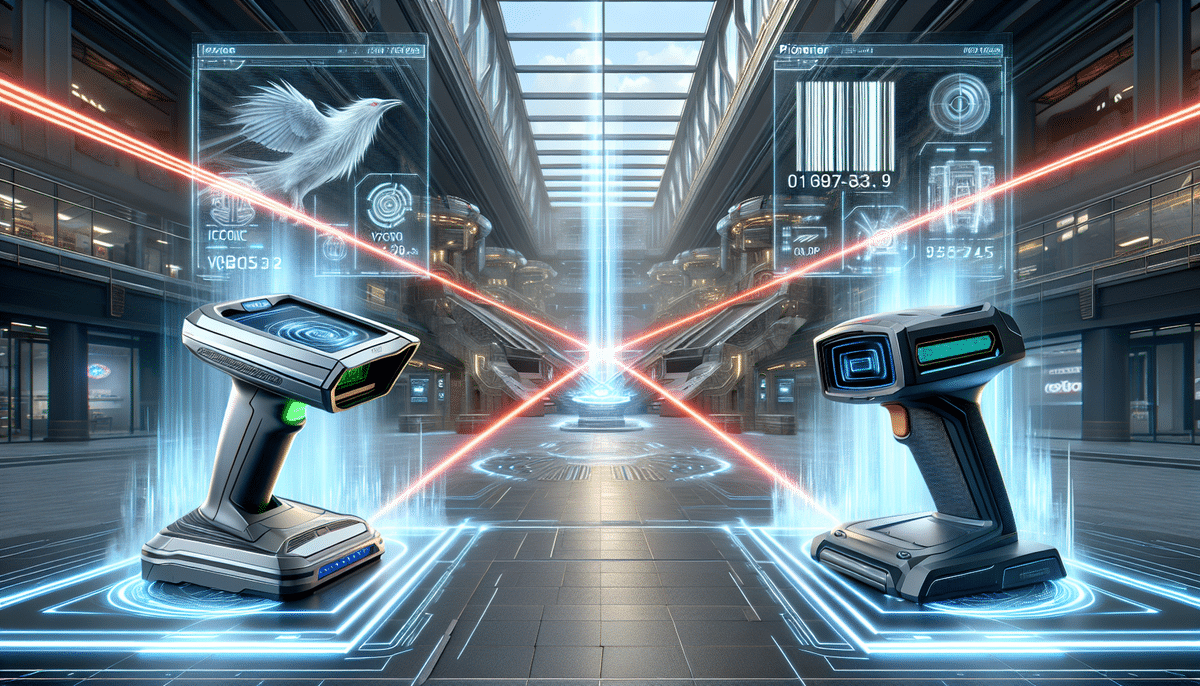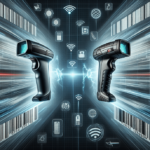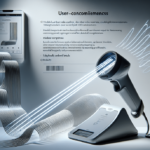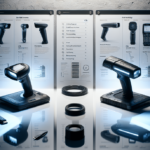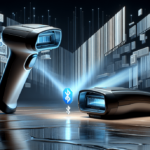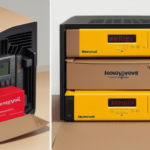Introduction
Barcode scanners are indispensable tools for businesses that handle large volumes of products or inventory daily. Selecting the right scanner can significantly enhance efficiency, accuracy, and productivity. This article provides an in-depth comparison of two popular barcode scanners—the Datalogic Gryphon I GD4500 and the Honeywell Voyager 1200g. We examine their features, performance, and capabilities to help you make an informed decision for your business needs.
History and Evolution of Barcode Scanners
Barcode scanners have undergone significant advancements since their inception in the late 1940s. The first barcode scanner was developed in 1948 by Bernard Silver and Norman Joseph Woodland. However, it wasn't until the 1970s that barcodes gained widespread adoption in the retail industry, revolutionizing inventory management and checkout processes.
Technological innovations have continually enhanced barcode scanners, making them more sophisticated, efficient, and affordable. Today's scanners offer a variety of types, including handheld, desktop, and mobile scanners, each tailored to specific industry needs. A notable advancement is the integration of image recognition technology, enabling scanners to decode barcodes with greater speed and accuracy.
The Importance of Choosing the Right Barcode Scanner
Selecting the appropriate barcode scanner is crucial for optimizing business operations. The right scanner can:
- Enhance Productivity: Faster scanning speeds reduce wait times and increase throughput.
- Improve Accuracy: Advanced scanning technologies minimize errors, ensuring reliable data capture.
- Increase Efficiency: Seamless integration with existing systems streamlines workflows.
Factors to consider when choosing a barcode scanner include scanning distance, surface compatibility, connectivity options, durability, and budget. Tailoring the choice to your specific industry requirements ensures that the scanner effectively meets your operational needs.
Comparison of Datalogic Gryphon I GD4500 and Honeywell Voyager 1200g
Features and Specifications
| Feature | Datalogic Gryphon I GD4500 | Honeywell Voyager 1200g |
|---|---|---|
| Scan Range | 0-46 cm (0-18 inches) | 0-35 cm (0-14 inches) |
| Connectivity | USB, RS-232, Keyboard Wedge, Wand Emulation | USB, Keyboard Wedge, RS-232 |
| Scanning Angle | 42 degrees | 60 degrees |
| Symbologies | 1D, 2D, Postal, Stacked, Composite | 1D, PDF, Composite |
| Durability | IP52-rated, 1.8m drop resistance, Gorilla Glass | IP42-rated, 1.5m drop resistance |
| Weight | 210g (7.44 oz) | 130g (4.6 oz) |
The Datalogic Gryphon I GD4500 offers a wider scan range and supports a broader range of symbologies compared to the Honeywell Voyager 1200g. Additionally, the Gryphon I GD4500 boasts a more rugged design, making it suitable for demanding environments.
Ergonomics and User-Friendliness
Ergonomics play a vital role in user experience, especially for businesses that require prolonged scanning sessions.
- Datalogic Gryphon I GD4500: Features a larger, more robust design suitable for industrial environments.
- Honeywell Voyager 1200g: Offers a smaller, more compact form factor, making it easier to handle and less fatiguing for users.
Durability and Ruggedness
Durability is essential for barcode scanners used in harsh conditions.
- Datalogic Gryphon I GD4500: IP52-rated for dust and water resistance, can withstand drops from up to 1.8 meters, and is equipped with Gorilla Glass for added protection.
- Honeywell Voyager 1200g: IP42-rated for dust resistance and can endure drops from up to 1.5 meters.
Scanning Performance
Scanning performance is a critical factor in determining the efficiency of barcode scanners.
- Datalogic Gryphon I GD4500: Offers a scanning speed of up to 325 scans per second and features Motionix motion-sensing technology for automatic mode switching.
- Honeywell Voyager 1200g: Provides a scanning speed of up to 100 scans per second, suitable for environments with moderate scanning demands.
Connectivity and Software Compatibility
Connectivity options and software compatibility ensure seamless integration with existing systems.
- Datalogic Gryphon I GD4500: Includes USB, RS-232, Bluetooth, and Wand Emulation, offering greater versatility. Compatible with various software applications and operating systems.
- Honeywell Voyager 1200g: Offers USB, Keyboard Wedge, and RS-232 connectivity. Supports a wide range of software applications, including Microsoft Excel and QuickBooks.
Pricing and Value for Money
Price is often a decisive factor when selecting a barcode scanner.
- Datalogic Gryphon I GD4500: Generally priced higher due to its advanced features and durability. May offer better long-term ROI for businesses requiring robust performance.
- Honeywell Voyager 1200g: More affordable upfront, making it suitable for businesses with budget constraints.
Customer Reviews and Ratings
Customer feedback provides valuable insights into the real-world performance and reliability of barcode scanners.
- Datalogic Gryphon I GD4500: Users commend its high scanning speed and durability, particularly in industrial settings. Some users note the higher price point as a consideration.
- Honeywell Voyager 1200g: Appreciated for its compact design and ease of use in retail environments. A few users have mentioned compatibility issues with specific software applications.
Overall, both scanners receive positive reviews for their performance and reliability, with preferences often aligning with specific use cases and industry requirements.
Industry Applications
The versatility of the Datalogic Gryphon I GD4500 and the Honeywell Voyager 1200g makes them suitable for various industries:
- Retail: Efficient inventory management and point-of-sale operations.
- Manufacturing: Tracking and managing production processes.
- Healthcare: Managing medical supplies and patient records.
- Logistics: Streamlining warehouse operations and shipping processes.
Future Trends in Barcode Scanning Technology
The future of barcode scanning technology is poised for significant advancements driven by emerging technologies:
- Internet of Things (IoT): Enhanced connectivity will facilitate real-time data sharing and inventory tracking.
- Augmented Reality (AR): Integration with AR will improve data visualization and user interaction.
- Artificial Intelligence (AI) and Machine Learning: These technologies will enable predictive analytics and automated inventory management, increasing the accuracy and efficiency of barcode scanning systems.
As these technologies evolve, barcode scanners will become more intelligent and adaptable, offering businesses unprecedented levels of operational efficiency.
Conclusion
Choosing between the Datalogic Gryphon I GD4500 and the Honeywell Voyager 1200g depends on your specific business needs and requirements. Both scanners offer unique features and capabilities:
- Datalogic Gryphon I GD4500: Ideal for businesses requiring a durable, versatile scanner with a wide scanning angle and advanced motion-sensing technology. Although it has a higher initial cost, the long-term benefits may justify the investment.
- Honeywell Voyager 1200g: Suitable for businesses seeking an affordable, compact, and easy-to-use scanner for high-volume scanning in retail or similar environments.
Evaluate your operational needs, budget, and the specific features that are most important to your business to make the best choice between these two excellent barcode scanners.















